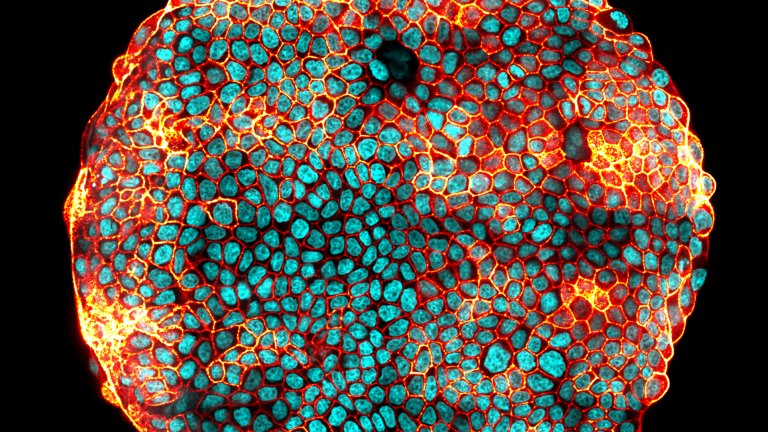
© Nicolas HARMAND / Sylvie HENON / David PEREIRA / MSC / CNRS Images
View the mediaFolder
Physics plays an essential part in understanding the mechanisms of life and also has applications in the field of medicine, providing cutting-edge diagnostic and therapy tools.

© Nicolas HARMAND / Sylvie HENON / David PEREIRA / MSC / CNRS Images
View the mediaExperiments, observations and physical modelling allows us to establish the principles by which living systems are organised at different scales, in order to learn about and understand the laws of evolution.
Other challenges in understanding life are addressed with physical approaches. For example, by studying the interaction of waves with living matter, new imaging and diagnostic techniques can be developed. Finding out about and characterising the activity of living beings through physical quantification techniques (energy, movement) can be applied to social issues such as frugality and sustainability, but also biomimicry, bio-inspiration, transformation or conversion.
Techniques such as fluorescence microscopy, MRI (Magnetic Resonance Imaging) and PET (Positron Emission Tomography) allow the structure and function of biological tissues to be explored at a microscopic level, providing an in-depth understanding of physiological and pathological mechanisms. While fluorescence microscopy relies on the use of fluorescent molecules, PET involves the detection of gamma photons emitted by radioactive tracers administered to a patient. MRI is based on the interaction between hydrogen atoms present in body tissues and a powerful magnetic field. Indeed, increasingly accurate and intense magnetic fields are developed with the contribution of physics.
These technological advances are not limited to diagnosis: they have also revolutionised treatments. Hadron therapy, for example, uses heavy particles to precisely target tumours, minimising damage to healthy tissue. Furthermore, nanoparticles offer the possibility of delivering drugs directly to diseased cells, thereby reducing unwanted side effects. For example, nanomedicine allows drugs to be encapsulated in a nanoparticle and guided to the cancerous site. These drugs are known as nanomedicines.
To further personalise healthcare, “patient-specific” models and biomechanical models are booming. They use diagnostic data to create computer simulations of patients, allowing doctors to plan precise and effective surgical procedures. These computable models are particularly useful for complex interventions, such as proton therapy for eye tumours.
In short, the physics of life is revolutionising medicine by improving the precision of diagnosis, introducing innovative therapies and making it easier to plan personalised interventions. Biomechanics, for its part, gives us a better understanding of the human body and allows us to improve performance.
Keywords: living systems, medicine, medical imaging, diagnostic, therapy tools, treatments, computable models, tissue
Our work is guided by the way scientists question the world around them and we translate their research into images to help people to understand the world better and to awaken their curiosity and wonderment.